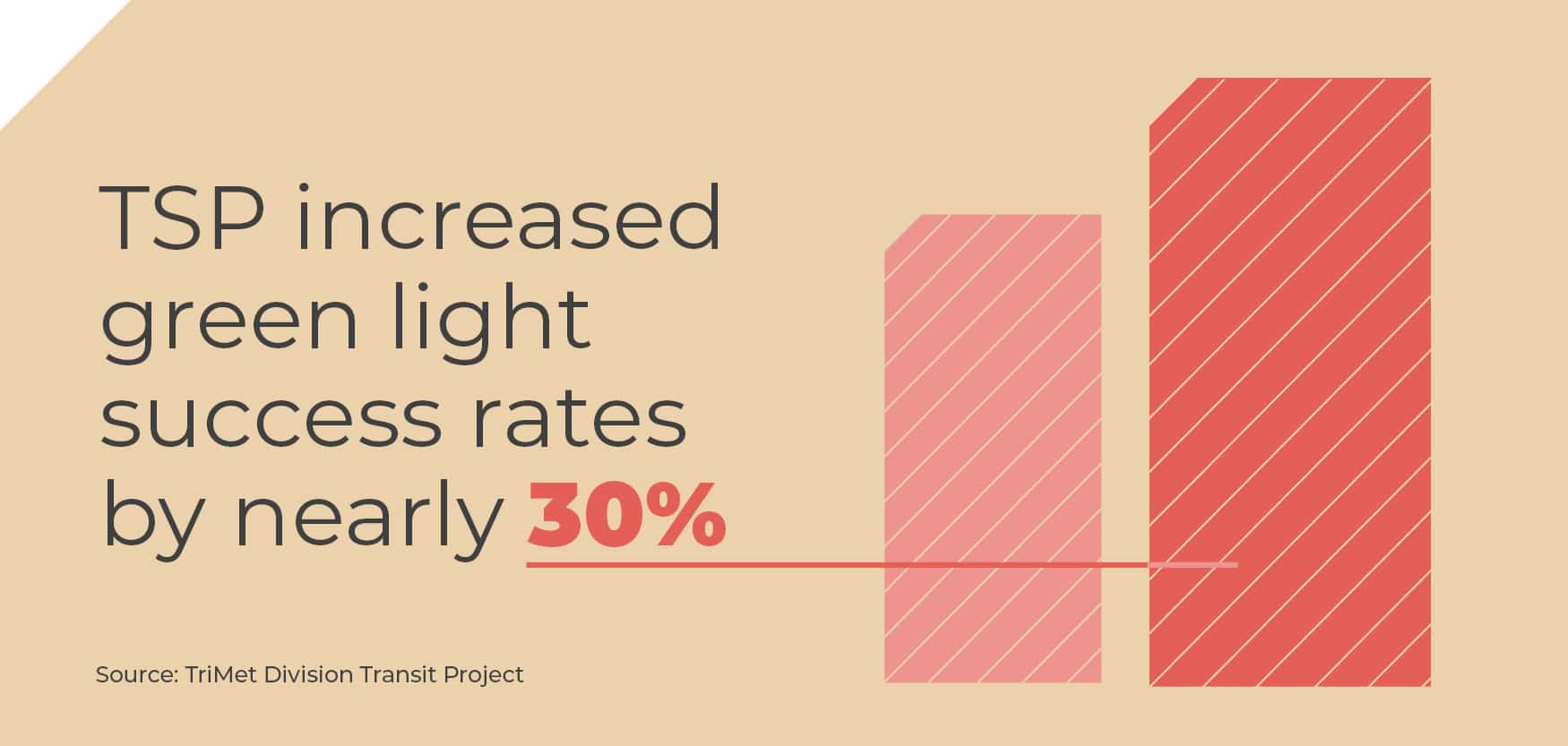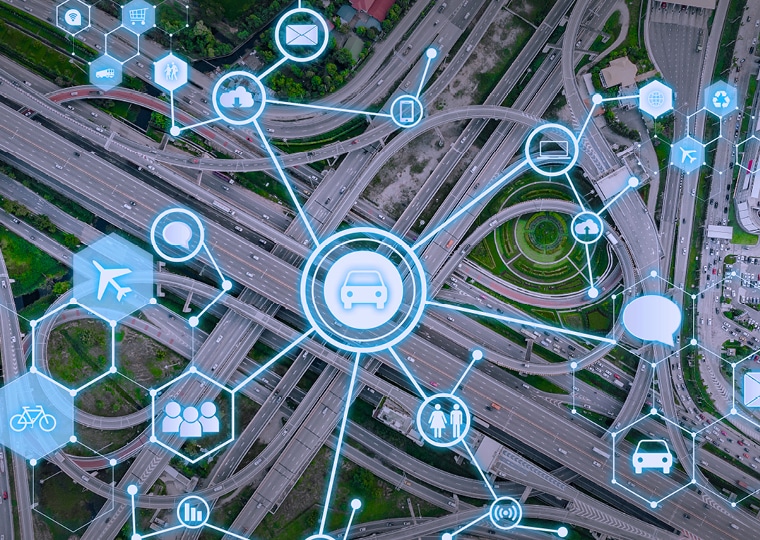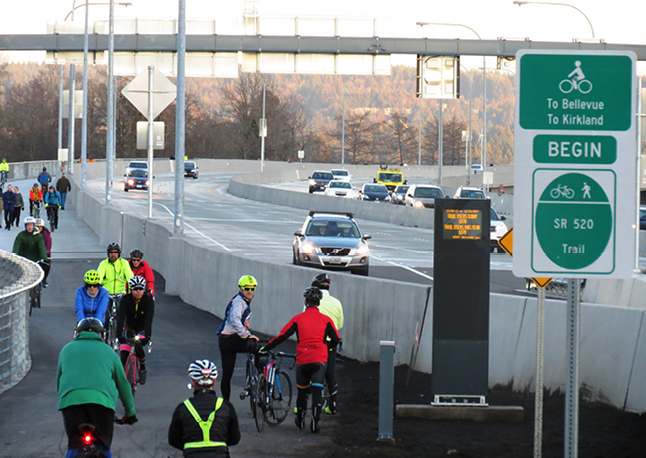As transit agencies across North America look to expand and better support their existing ridership, the secret to their success may be a tool that is otherwise invisible to the naked eye and utilizing Artificial Intelligence (AI) to help deliver service reliability.
The technology behind Traffic Signal Priority (TSP), an Intelligent Transportation System (ITS) solution that leverages optimized signal timing and real-time communications to provide buses and other transit vehicles a higher likelihood of getting a green light at specified intersections, has advanced significantly in recent years and is being used by more and more transit agencies, with many advantages over earlier versions of the technology.
During a recent industry presentation with our partners at the Tri-County Metropolitan Transportation District of Oregon (TriMet), we discussed how the agency is using “next-generation” TSP on some of its high-capacity bus lines in and around Portland, OR. This presentation highlighted how the agency has benefited from this advanced technology and also lessons learned that could be applied to other operators exploring TSP as a mobility solution.
The current rise in TSP’s popularity is two-fold. For one, the technology has come a long way from the hardware-heavy, labor-intensive devices that were previously used for TSP. Earlier generation TSP setups included the use of an optical detector on traffic signals, as well as an associated emitter on the bus vehicle. A second generation of technology replaced this infrared system (IR) with radio communications. But in both cases, in addition to being costly to install and maintain, there were many operational challenges associated with the technology as it aged. The IR solutions like TriMet’s relied on “line-of-sight detection,” meaning the bus had to be in view of the receiver on the signal ahead. This became challenging for transit operators, especially in inclement weather and if systems weren’t maintained frequently. Radio communications systems didn’t rely on the light of sight, but had other challenges with interference and communications reliability that didn’t often allow messages to get through.
AI is used within the cloud system algorithms to “learn” how traffic conditions change over the day
Today’s next-generation TSP systems utilize cellular technology to collect information about the location and speed of a bus. That information is then sent to a cloud server which allows the system to adapt the phasing of traffic signals in real-time using artificial intelligence. Additionally, because modern TSP systems are cloud-based and not hardware-based, it’s easier to integrate and update on any vehicle, especially when transit agencies update their fleets. AI is used within the cloud system algorithms to “learn” how traffic conditions change over the day, from day to day and over longer periods, all contributing to better estimates of when a bus is going to arrive at a signal, and thus increasing the likelihood of the bus getting a green light.
The other factor that has contributed to increased TSP deployment has been the changing state of transit following the pandemic. As our planning team recently noted, over the past three-plus years, travel patterns have become more malleable, especially as it relates to the traditional definition of “peak” and “off peak” service. As a result, agencies need to be more adaptable in the services they offer. Bus transit should be more efficient and reliable over longer windows of time during the work week and on weekends, while bus and other modes need to connect better to “first mile/last mile” modes like bicycles, e-scooters, shuttles, etc. TSP that’s deployed within dedicated bus and bike lanes help agencies move a higher volume of people at all times of day, better reflecting the new paradigm for transit following COVID.
TSP that’s deployed within dedicated bus and bike lanes help agencies move a higher volume of people at all times of day, better reflecting the new paradigm for transit following COVID.
The success of modern TSP has had wide-ranging implications for transit. During the testing of this technology for TriMet’s Division Transit Project – a Bus Rapid Transit service between Gresham and Downtown Portland – the green light success rate at several intersections had increased from 70% to nearly 90%.
With better on-time performance comes improved customer relations for the agency. Traditionally, riders had grown to distrust the “predetermined” schedule put forth by an agency because buses were so frequently off-schedule due to traffic and congestion in a corridor. With next-generation TSP, commuters will be more willing to use a service if because the bus is far more likely to arrive when the schedule says it will.

For the agency, TSP allows operators to think more strategically about the service they provide. STV’s mobility technologies team specializes in operational analysis as it relates to the deployment of TSP and other ITS.
For example, as the use of technology makes transit service more reliable, we can work with an agency’s operations team to determine a schedule that most effectively utilizes the higher level of schedule reliability that these technologies support. If an agency no longer has to build in an excessive amount of “slack time” into a bus schedule, they can potentially eliminate unnecessary vehicles from a route to maximize service and provide cost savings in the process. More efficient service is also more environmentally friendly. With TSP, there will be less idling for buses, which conserves more fuel for the agency.
By creating a more reliable transit network that effectively communicates travel times and schedules, this technology in turn leads to better access and equity for all who use buses and other transit services.
As TSP further evolves, our team is excited to work with our clients across North America to determine how to best leverage this technology and create better outcomes for riders. By creating a more reliable transit network that effectively communicates travel times and schedules, this technology in turn leads to better access and equity for all who use buses and other transit services.
For deeper insights into what these modern transit solutions look like in practice, join our upcoming webinar with Digi International on “Using AI to Optimize Public Transit Operations with Next Gen Traffic Signal Priority” on Feb 15th.
I’ll be speaking alongside experts from across the transit field on how to apply TSP to create high-frequency operations and increased ridership.








